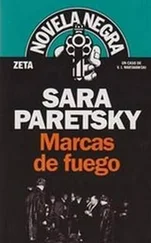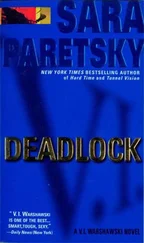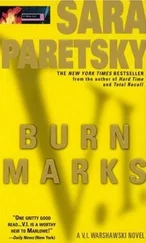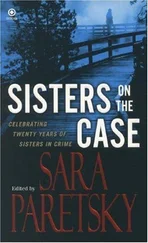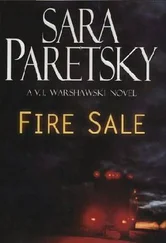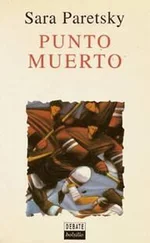Sara Paretsky - Windy City Blues
Здесь есть возможность читать онлайн «Sara Paretsky - Windy City Blues» весь текст электронной книги совершенно бесплатно (целиком полную версию без сокращений). В некоторых случаях можно слушать аудио, скачать через торрент в формате fb2 и присутствует краткое содержание. Жанр: Детектив, на английском языке. Описание произведения, (предисловие) а так же отзывы посетителей доступны на портале библиотеки ЛибКат.
- Название:Windy City Blues
- Автор:
- Жанр:
- Год:неизвестен
- ISBN:нет данных
- Рейтинг книги:4 / 5. Голосов: 1
-
Избранное:Добавить в избранное
- Отзывы:
-
Ваша оценка:
- 80
- 1
- 2
- 3
- 4
- 5
Windy City Blues: краткое содержание, описание и аннотация
Предлагаем к чтению аннотацию, описание, краткое содержание или предисловие (зависит от того, что написал сам автор книги «Windy City Blues»). Если вы не нашли необходимую информацию о книге — напишите в комментариях, мы постараемся отыскать её.
Windy City Blues — читать онлайн бесплатно полную книгу (весь текст) целиком
Ниже представлен текст книги, разбитый по страницам. Система сохранения места последней прочитанной страницы, позволяет с удобством читать онлайн бесплатно книгу «Windy City Blues», без необходимости каждый раз заново искать на чём Вы остановились. Поставьте закладку, и сможете в любой момент перейти на страницу, на которой закончили чтение.
Интервал:
Закладка:
You’ll also see grain elevators poking up behind the garbage mountain, and, startlingly, the smokestacks from oceangoing freighters. The landfill and factories hide a network of waterways from the road.
At 130th Street, twenty miles southeast of the Water Tower where tourists and Chicagoans both like to shop, you finally leave the expressway and head east into the heart of the industrial zone. On a weekday yours may be the only car among the semis that compete with barges and trains to supply the factories and haul their finished products.
One Hundred Thirtieth passes Metron, one of Chicago ’s few surviving steel mills, Medusa Cement, and the Scrap Corporation of Chicago -with a mountain of scrap iron to prove it. At Torrence Avenue you run into the giant Ford Assembly Plant, their largest in the world. There you turn north again, crossing the Calumet River on an old counterweight vertical lift bridge. Immediately beyond is 122nd Street, a narrow, badly paved industrial thoroughfare. Turn left under the Welded Tube Company billboard and follow the semis west.
Under a sky purple-pink with smog, marsh grasses and cattails tower above the cars. Despite a century of dumping that has filled the ground water with more carcinogens than the EPA can classify, the grasses flourish. If you are a bird-watcher, and patient, you can find meadowlarks and other prairie natives here.
After a mile 122nd Street intersects with a gravel track, Stony Island. To the right it goes up to the CID landfill. To the left it runs next to Dead Stick Pond until both of them dead-end at Lake Calumet. Medusa Cement is busy digging at the south end of the marsh; on the west the Feralloy Corporation buildings loom; to the east major construction is underway.
Conflicting signs tacked to the trees proclaim the area both a clean-water project and warn trespassers of hazardous wastes. Despite warning signs, on a good day you can find anything from a pair of boots to a bedstead dumped in Dead Stick Pond.
Fish have been returning to the Calumet River and its tributaries since passage of the Clean Water Act in the seventies, but the ones that make their way into the pond show up with massive tumors and rotted fins. The phosphates in the water further cut the amount of oxygen that can penetrate the surface. Even so, wild birds continue to land here on their migratory routes. And Chicagoans so poor they live in shanties without running water catch their dinners in the marsh. Their shacks dot unmarked trails in the swamps. The inhabitants have a high mortality rate from esophageal and stomach cancers because of the pollutants in their well water. The half-feral dogs around their homes make it hard for any social welfare agent to get a clear idea of their living situation.
By this point in your tour you are either cold and tired or hot and thirsty. Either way you would probably like to relax over the native drink-a shot and a beer. The ideal place to do so is Sonny’s Inn a few miles north.
Retrace your route to Torrence Avenue, and go left, or north. From 117th to 103rd Street, almost two miles, you can see the remains of Wisconsin Steel. Once one of the world’s largest producers, it has been bankrupt and gone half a decade now.
At 97th Torrence becomes Colfax. Ride it up to 95th, where you’ll turn right and drive three blocks to Commercial Avenue, the main drag in South Chicago. Two blocks north to 91st Street and you’ll find Sonny’s Inn just across the railroad tracks.
The little bungalows that line the route are well kept up for the most part, although a few look pretty hopeless. Even though almost 50 percent of the population is out of work they still take pride in their homes and yards. And the Steel City and South Chicago banks, which hold most of their home mortgages, refinance them time and again. In themselves these banks make an amazing tourist attraction: what other big city in the world can boast of banks so committed to their community that they carry their customers through a prolonged period of trouble?
It is the gallantry of this old neighborhood that made me take it for the home of my detective, V. I. Warshawski. The gallantry, on the one hand, and the racial and ethnic mix that turned it into a volatile soup on the other. South Chicago was traditionally the first stop for new immigrants in Chicago. The mills, running three shifts a day, provided jobs for the unskilled and illiterate. The neighborhood has been home to Irish, Polish, Bohemian, Yugoslav, African, and most recently Hispanic Americans. As each new wave of immigrants arrived, the previous ones, with a fragile toehold on the American dream of universal prosperity, would fight to keep the newcomers out. The public schools were frequent arenas for real fights. Girls on South Chicago ’s streets either acquired boyfriends to protect them, or were carefully watched day and night by their parents, or learned the basics of street fighting to protect themselves. Even though V. I. grew up under the watchful eye of her mother, her father wanted her to be able to look after herself: as a police officer he knew better than most parents what dangers faced a girl who couldn’t fight for herself.
So V. I. came of age under the shadow of the mills, with weekend treks to Dead Stick Pond to watch the herons feed. She certainly knows Sonny’s Bar. Sonny’s has stood through all the waves of ethnic and racial change. It is a throwback to the days of the late great Mayor Daley. His icons hang on the walls and stand on shelves-signed photos of him with the original Sonny, signed photos of him with President Kennedy, campaign stickers, yellowing newspaper articles. A set of antlers over the bar obscures some of the memorabilia.
If you go at lunchtime on a weekday your dining companions will represent a complete cross section of the south side-every racial and ethnic group the city can boast, and most of the neighborhood occupations. You can get a drink and a sandwich for under five dollars. And if you do decide to go native and ask for a shot and a beer-that’s rye and a draw. Don’t call attention to yourself by asking for brand-name whiskeys.
South Chicago doesn’t top the city’s list of neighborhoods eligible for limited street and sidewalk repair funds. You may notice places where pavements have collapsed. If you look into the holes you’ll see cobblestones five feet down. Because the landfill a century ago didn’t hold back the underlying marshes, the city jacked itself up and built another layer over the top. South Chicago is one of the few places where the original substratum remains.
If you happen to stay at the Palmer House downtown you might like to know that it is the only surviving building from the lower city. Not wanting to dismantle his pride and joy Mr. Palmer raised the whole building up on stilts so that the new, higher State Street could be paved in front.
With your shot and your Polish dog under your belt you’re ready now for more sight-seeing. Driving west two miles to Stony Island and four blocks south to 95th Street you’re now in the Pullman Historic Landmark District. George Pullman, who made his fortune inventing and manufacturing the Pullman car, built almost two thousand houses to form a model village in 1880. The area was supposed to be a show-case for workers, partly to keep union agitation low. The houses were built in the federal style from clay bricks dug out of nearby Lake Calumet. The Pullman Company operated all the village stores and provided all services.
Unfortunately the houses rapidly became too expensive for the working population to own. Discontent with the company over that and other matters came to a head during the depression of the 1890s, when many workers lost their jobs. The scene of violent confrontations, Pullman lost a court battle with its workers over the right to own and operate the town. When the company pulled out the neighborhood went through numerous economic and ethnic upheavals, but in 1970 was designated a national landmark. Since then people have been renovating these beautiful old homes.
Читать дальшеИнтервал:
Закладка:
Похожие книги на «Windy City Blues»
Представляем Вашему вниманию похожие книги на «Windy City Blues» списком для выбора. Мы отобрали схожую по названию и смыслу литературу в надежде предоставить читателям больше вариантов отыскать новые, интересные, ещё непрочитанные произведения.
Обсуждение, отзывы о книге «Windy City Blues» и просто собственные мнения читателей. Оставьте ваши комментарии, напишите, что Вы думаете о произведении, его смысле или главных героях. Укажите что конкретно понравилось, а что нет, и почему Вы так считаете.



